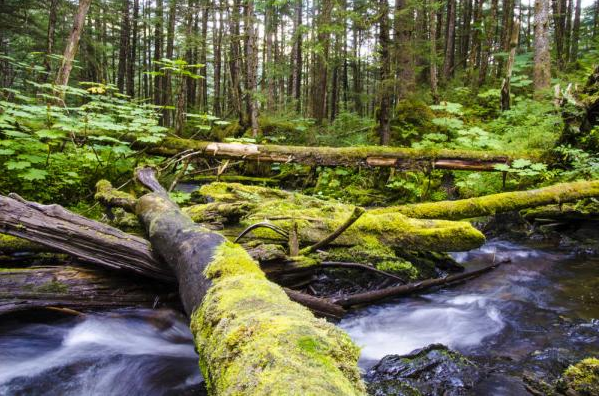The following editorial first appeared in the Ketchikan Daily News:
Tick tock.
The U.S. Forest Service has released an amended Tongass Land Management Plan, along with a draft record of decision and a final environmental impact statement.
Litigation often follows release of a Tongass plan; time will tell whether this is the case.
But, perhaps, instead of litigation, maybe it will be new law to affect the plan. Ketchikan-born Sen. Lisa Murkowski supports the timber industry — what remains of it — and will carry its torch in Congress.
With the decline in Alaska’s economy, i.e. the multi-billion state budget deficit robbing Alaskans of jobs and services, Tongass inhabitants would benefit from a Tongass plan that allows for a viable and sustainable timber industry.
The industry has growth potential. Timber is what the area largely depended upon for its economy before the discovery of oil on Alaska’s North Slope made Alaska a wealthy state. That and fishing. But a steep drop in oil prices created deficit state expenditures.
The crux of the Tongass plan in terms of the timber industry provides a way for transitioning from old-growth to young-growth harvests.
The plan calls for a 16-year transition, of which particular conservationists say is too long and industry officials maintain is too short. Industry says an economically stable switch from old- to young-growth is a 30-year endeavor, while others want to see it accomplished in 10-15 years.
Young trees should be harvested at an age when they will realize the most marketable product. And old trees should be harvested before they die.
Obviously, opinions as to when that is differ. But it’s key for having timber jobs that will enhance the economy of the state and the region.
The City of Ketchikan opposes the amended Tongass plan and has asked Sen. Murkowski to delay its implementation.
The Ketchikan City Council in April unanimously passed a resolution calling for a “credible financial analysis of the proposed transition,” noting that the transition from old- to young-growth would require a federal subsidy and the federal government has its own deficit to contend with.
The council’s resolution calls for the Forest Service to continue to provide old-growth timber sales at an estimated 140 million board feet annually — an amount spelled out in the Tongass Land Management Plan and the Tongass Timber Reform Act.
The Forest Service has provided a 30-day comment period of the environmental impact statement and 60 days for public comment on the amended plan and record of decision. The clock started ticking for those periods on June 25.
Information about the documents is available on the Internet at: www.fs.usda.gov/tongass.
Tick tock. Tick tock. Tick tock.
—
Related stories:
Juneau rally urges lawmakers to ‘Do your jobs!’
Legislature starts fifth special session with no clear path forward
SEADOGS, JMR locate lost hikers near Spaulding Meadows Trail

